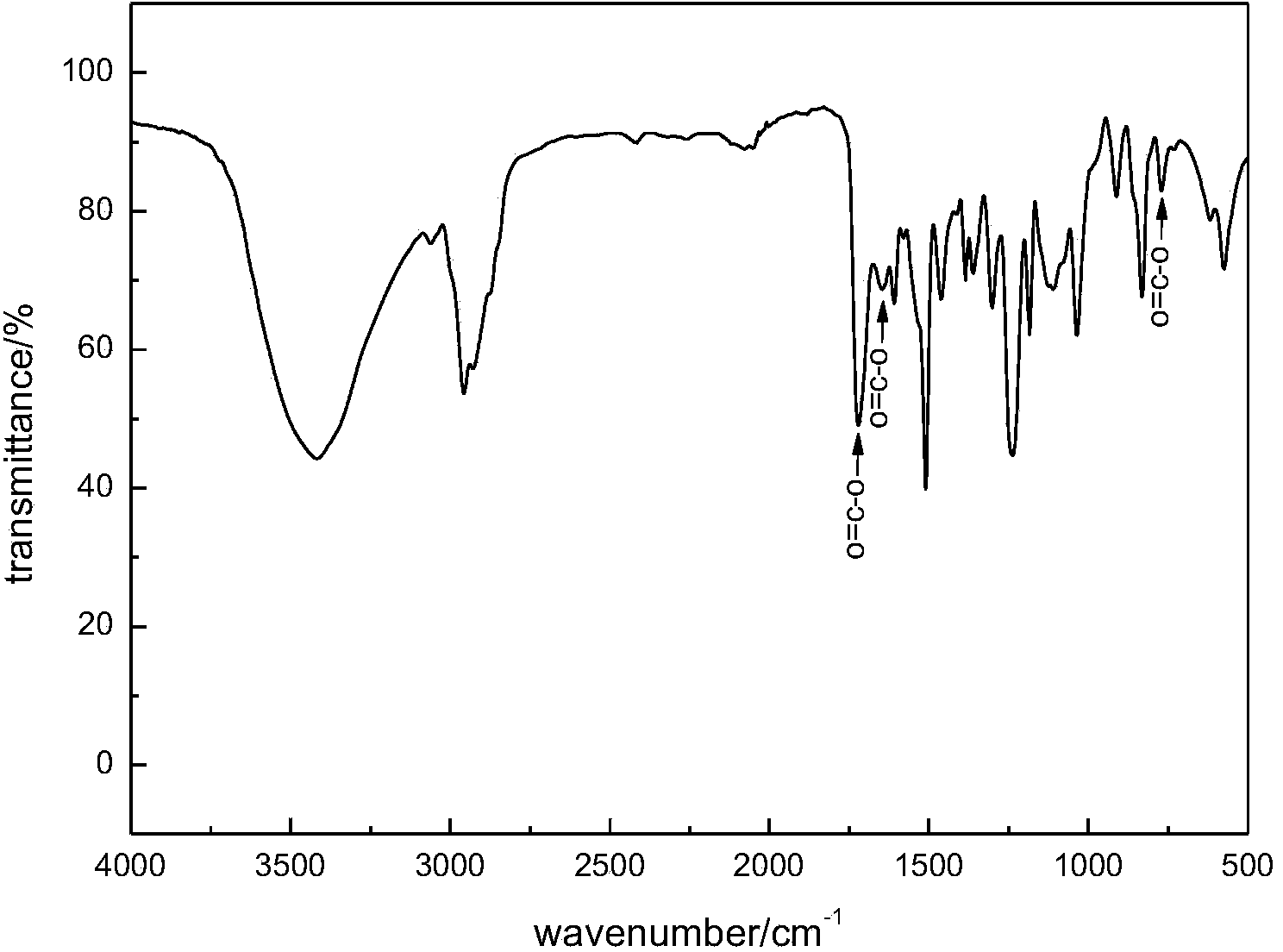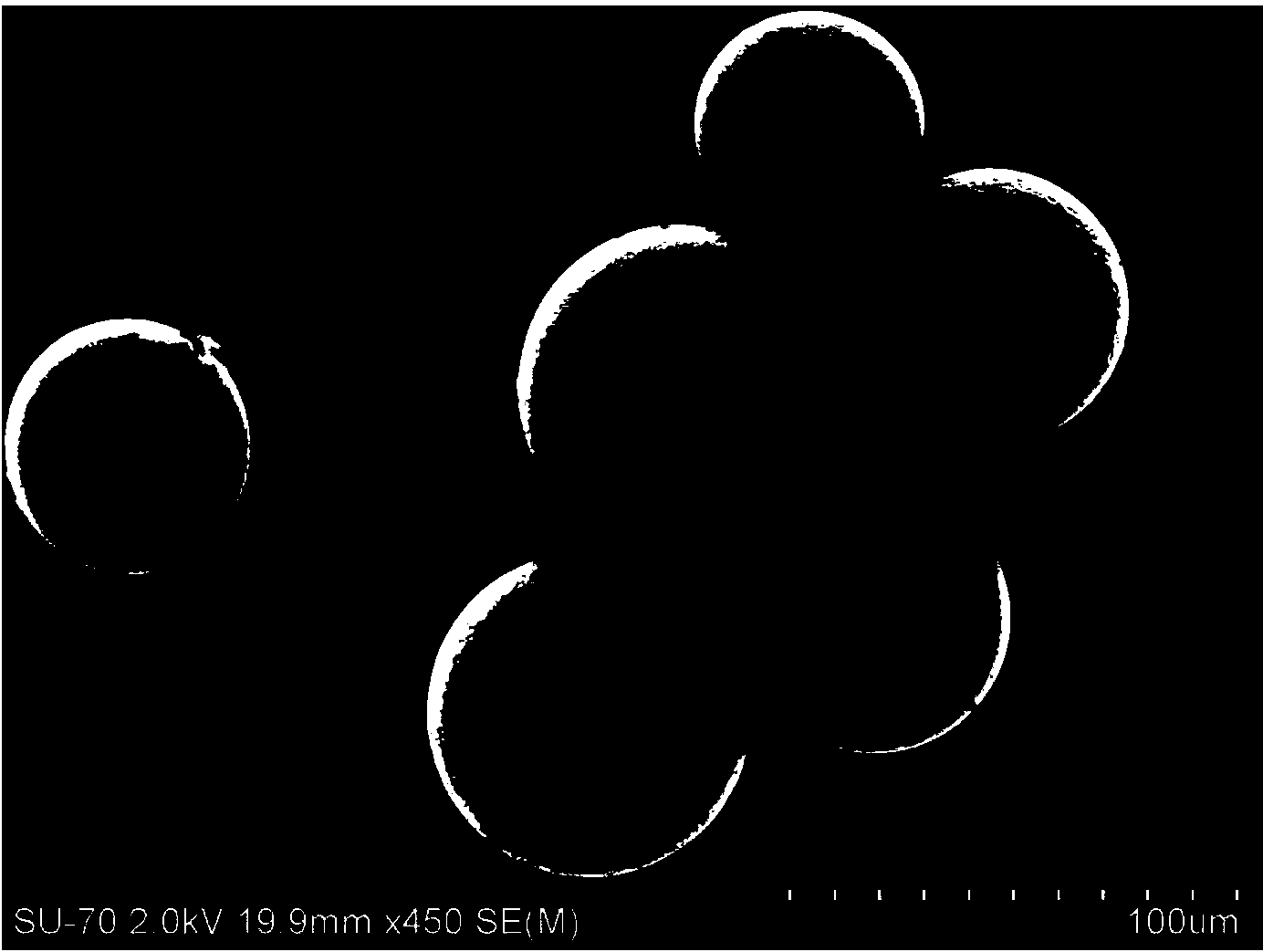Preparation method for epoxy microcapsule by taking polyurethane as wall material
A polyurethane and microcapsule technology, applied in the field of self-healing concrete and self-healing materials, can solve problems such as difficult to achieve, and achieve the effects of uniform wall thickness, good sphericity and smooth surface
- Summary
- Abstract
- Description
- Claims
- Application Information
AI Technical Summary
Problems solved by technology
Method used
Image
Examples
preparation example Construction
[0011] The invention provides a kind of preparation method that takes polyurethane as the epoxy microcapsule of wall material, comprises the following steps:
[0012] S1: Preparation of polyurethane prepolymer terminated with isocyanate;
[0013] S2: Mix the isocyanate-terminated polyurethane prepolymer with epoxy resin, add emulsifier and water, stir and emulsify to make an oil-in-water emulsion;
[0014] S3: heating up, the interface reacts to form the capsule wall;
[0015] S4: filtering, rinsing the sediment with water, and drying to obtain microcapsules with polyurethane as the wall material and epoxy resin as the core material.
[0016] Specifically, the process of step S1 is: mix the hydroxyl compound, isocyanate, solvent, and catalyst, heat up to 50-80°C, stir and react at a speed of 100-500rpm for 2-3 hours to obtain a polyurethane prepolymer; the hydroxyl compound Dihydroxyl compounds or polyhydroxyl compounds are included; the isocyanate includes diisocyanate or p...
Embodiment 1
[0030] Take 1.38g of glycerol, 10g of IPDI, 5g of acetone, and 0.03g of catalyst DBTDL, mix them evenly, add them into a three-necked flask, stir and react at 60°C and 300rpm for 2-3h, and obtain a polyurethane prepolymer terminated with isocyanate; After mixing the prepolymer with 18g of epoxy E-51 evenly, add it to a three-necked flask filled with 100g of 1wt% PVA aqueous solution, emulsify at 20°C and 1000rpm for 10min, and keep it at 60°C for 1-2h. After cooling, the reaction solution was filtered, the filter cake was washed with distilled water, and then filtered three times, and then dried at 45°C for 12 hours to obtain polyurethane-coated epoxy microcapsules. Fourier transform infrared analysis was carried out on the microcapsules, and the experimental results are as follows: figure 1 As shown, there are characteristic absorption peaks of ester bonds (O=C-O) in polyurethane at 1720, 1650 and 773 cm-1, which proves that the wall material of the microcapsules prepared by ...
Embodiment 2
[0032] Take 3g of polyethylene glycol, 6g of IPDI, 5g of acetone, and 0.03g of catalyst DBTDL, mix them evenly, add them into a three-necked flask, stir and react at 60°C and 300rpm for 2-3 hours, and obtain a polyurethane prepolymer terminated with isocyanate; After mixing the prepolymer with 10g of epoxy E-51 evenly, add it to a three-necked flask filled with 100g of 1wt% PVA aqueous solution, emulsify at 20°C and 1000rpm for 10min, and keep it at 60°C for 1-2h. After cooling, the reaction solution was filtered, the filter cake was washed with distilled water, and then filtered three times, and then dried at 45°C for 12 hours to obtain polyurethane-coated epoxy microcapsules.
PUM
 Login to View More
Login to View More Abstract
Description
Claims
Application Information
 Login to View More
Login to View More - R&D
- Intellectual Property
- Life Sciences
- Materials
- Tech Scout
- Unparalleled Data Quality
- Higher Quality Content
- 60% Fewer Hallucinations
Browse by: Latest US Patents, China's latest patents, Technical Efficacy Thesaurus, Application Domain, Technology Topic, Popular Technical Reports.
© 2025 PatSnap. All rights reserved.Legal|Privacy policy|Modern Slavery Act Transparency Statement|Sitemap|About US| Contact US: help@patsnap.com


